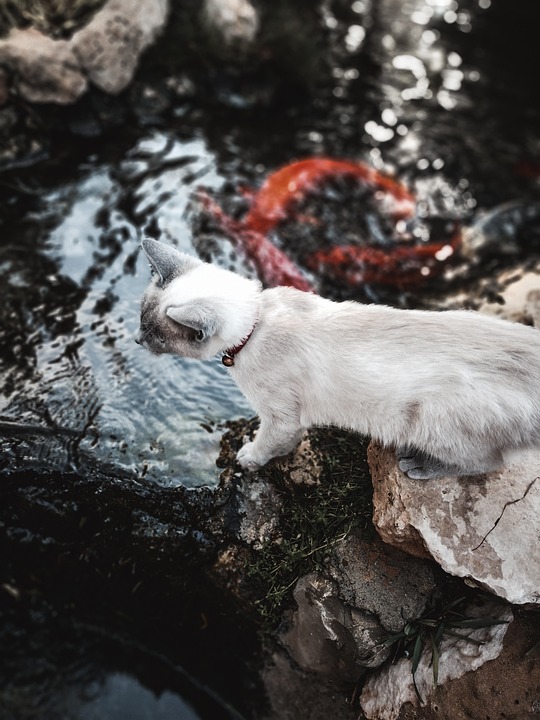Creating a fish tank for specialized fish species requires careful consideration and attention to detail. In this comprehensive guide, we will provide valuable insights and step-by-step instructions to help you establish a successful fish tank for these unique aquatic pets. Whether you’re a beginner or an experienced hobbyist, this guide will assist you in creating the perfect environment for your specialized fish species to thrive.
Before diving into setting up your fish tank, it is crucial to conduct thorough research on the specific fish species you plan to keep. Each species has its own unique habitat preferences, feeding habits, and social behaviors. Understanding their natural environment will help you replicate it in your tank, creating a comfortable and stress-free home for your fish.
Selecting the right tank size is vital for the health and well-being of your specialized fish. Consider the adult size of the species you intend to keep and ensure the tank offers ample swimming space. Overcrowding can lead to stress, aggression, and poor water quality. Aim for a tank size that accommodates their natural behaviors and allows them to thrive.
Maintaining suitable water parameters is essential to creating a healthy and stable environment for your specialized fish species. Factors such as temperature, pH levels, hardness, and water flow should match the requirements of your chosen species. Investing in a reliable water testing kit and a heater or chiller, if necessary, will help you monitor and adjust these parameters accordingly.
Proper filtration and oxygenation are crucial for maintaining excellent water quality in your specialized fish tank. Select a filter that is specifically designed for your tank size and the needs of your fish species. Additionally, consider incorporating an air pump or aeration system to ensure sufficient oxygen levels. Clean the filter regularly to prevent the accumulation of waste and maintain optimal water conditions.
Creating a natural and stimulating environment is essential for the well-being of your specialized fish. Provide ample hiding places, such as caves, plants, or driftwood, to mimic their natural habitat and offer shelter. Additionally, carefully selected decor can enhance their visual appeal and provide mental stimulation. However, ensure that all decorations are fish-friendly, without sharp edges or toxic components.
Lighting plays a crucial role in the overall health and behavior of your specialized fish species. Research the lighting requirements of your chosen species, including the optimal intensity, duration, and spectrum. Some fish species require specific lighting conditions to thrive, while others may prefer subdued lighting. Adjust the lighting accordingly to replicate their natural environment.
Understanding the dietary needs of your specialized fish species is vital for their growth and longevity. Research their preferred diet, including live or frozen food, pellets, or flakes. Some fish species might require a specialized diet, such as herbivores or carnivores. Feed them in appropriate quantities and avoid overfeeding to maintain water quality and prevent health issues.
Now, let’s address some frequently asked questions:
**Q1. Can I keep multiple specialized fish species in the same tank?**
In general, it is advisable to avoid mixing incompatible species, as aggression and territorial disputes may arise. However, some species can coexist peacefully if they have similar habitat requirements and temperaments. Thorough research and careful observation will guide you in selecting compatible tank mates.
**Q2. How often should I clean my specialized fish tank?**
Regular maintenance is crucial for the well-being of your fish. Perform partial water changes of about 10-20% every one to two weeks, depending on your tank’s size and stocking level. Additionally, clean the filter as instructed by the manufacturer to ensure optimal filtration efficiency.
**Q3. What signs indicate that my specialized fish are stressed or unwell?**
Fish exhibit various signs when stressed or unwell, including loss of appetite, unusual swimming patterns, color changes, fin damage, or increased aggression. Monitor your fish closely and consult a veterinarian or experienced aquarist if you notice any alarming behavior or physical changes.
**Q4. Can I use tap water for my specialized fish tank?**
The suitability of tap water depends on its quality. Tap water may contain chlorine, chloramines, heavy metals, or other impurities harmful to fish. Using a water conditioner or filtration system specifically designed for aquarium use is recommended to remove these substances and make tap water safe for your fish.
By following these guidelines and tailoring them to the specific needs of your specialized fish species, you can establish a thriving and successful fish tank. Remember, regular observation, research, and providing a comfortable environment will ensure the optimal health and well-being of your aquatic companions. Happy fish keeping!









